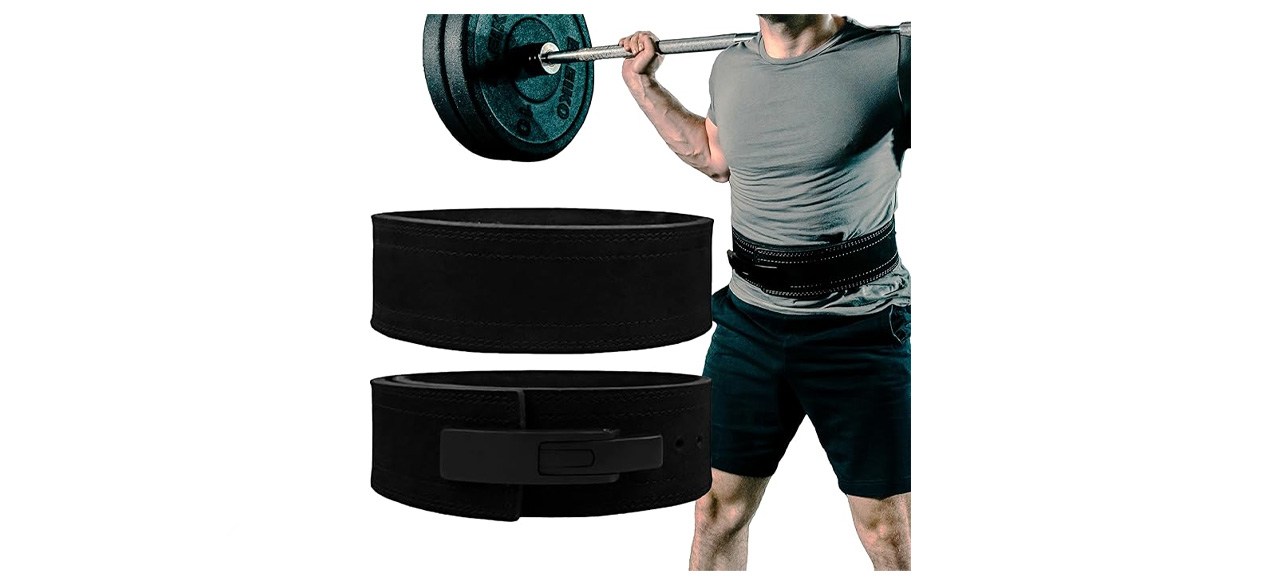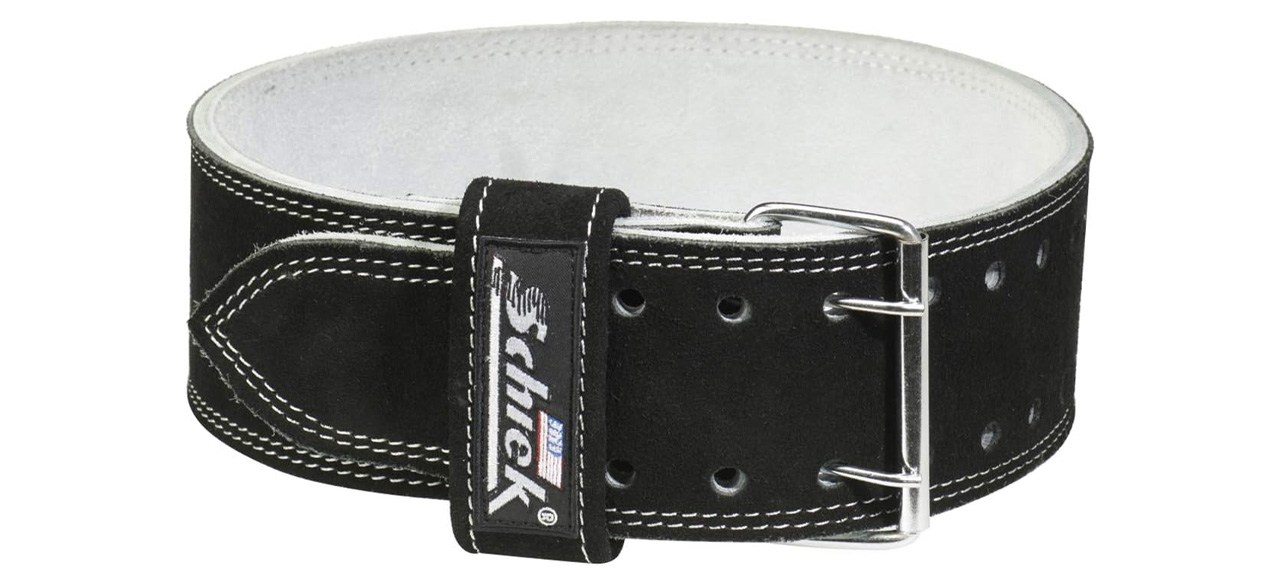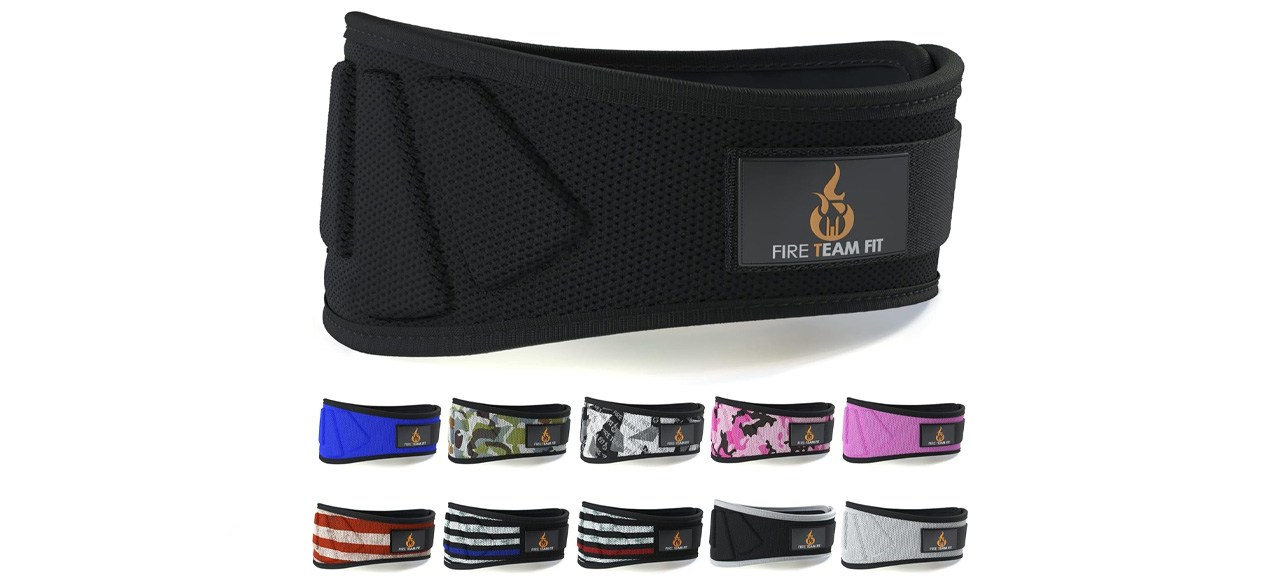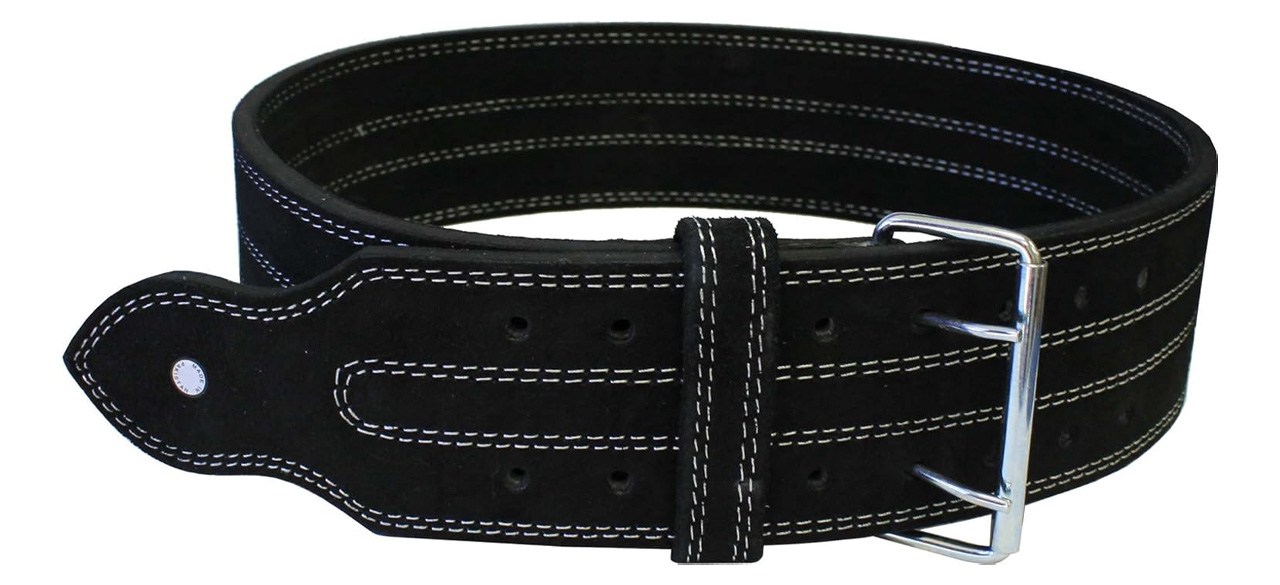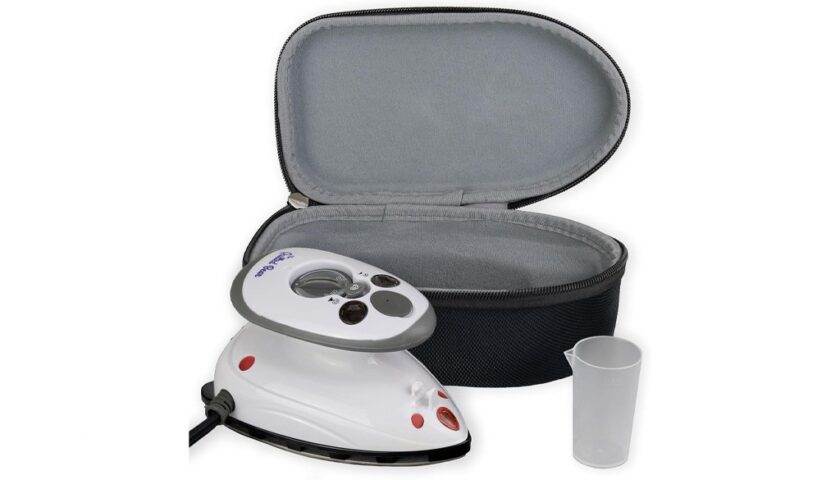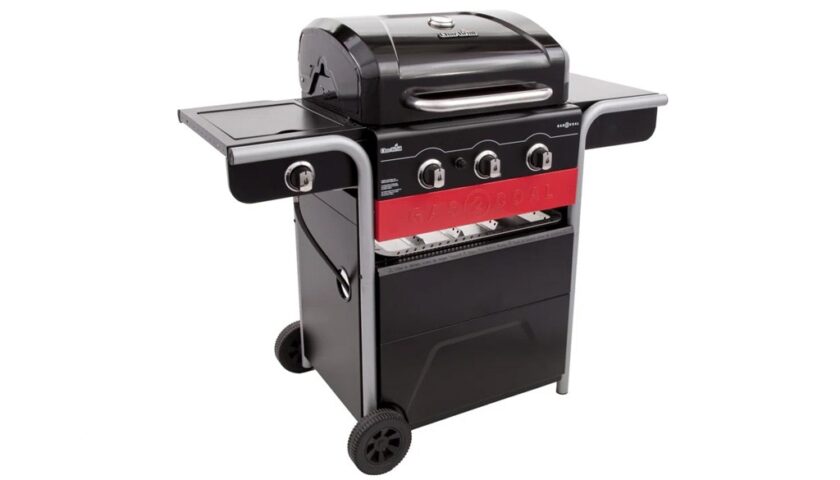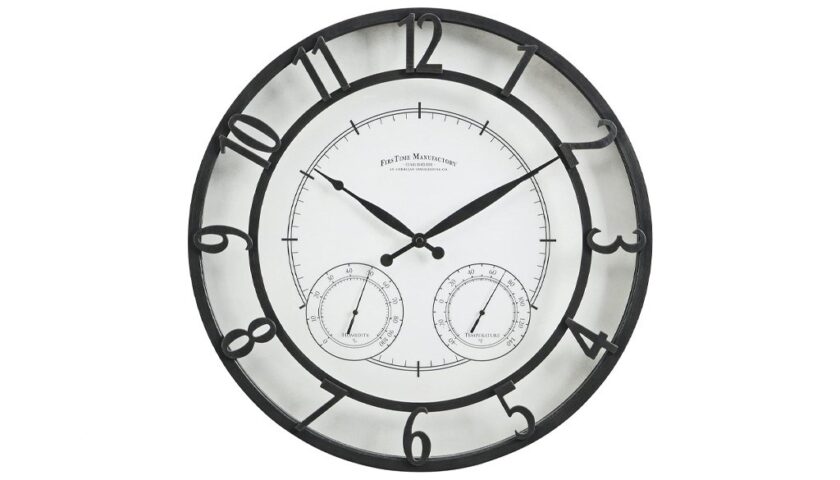Which weightlifting belts are best?
If you perform heavy lifts in the gym and are worried about injuring your back, you may want to consider using a weightlifting belt. These help to provide extra support to your spine and proprioceptive cues to the body to brace your core.
Powerlifters performing a lot of squats will need a very rigid and rugged belt like the Schiek Sports L6010 Competition Power Lifting Belt, while casual gym goers may prefer a slightly more flexible option.
What to know before you buy a weightlifting belt
Power lifting belts vs. weightlifting belts
Many people often lump all weightlifting belts together, but there are actually two types: weightlifting or bodybuilding belts and powerlifting belts. The former measure between 4 and 5 inches wide at the back but taper toward the front, making them a better choice for performing clean and jerks, crossfit and other activities or lifts that may involve a lot of deep forward bending or that aren’t done with as high of a weight.
Powerlifting belts measure between 4-6 inches wide the entire way around. This makes them more supportive and better for use on very heavy lifts.
When to wear a weightlifting belt
Weightlifting belts should not be worn during your entire workout routine. They’re also not a good choice for beginners, who may rely on the belt instead of proper form. They should only be worn when doing an exercise where there will be a heavy load on your spine, such as squats, deadlifts, clean and jerks and strict presses or when performing these at within 75% of your one-rep max.
What to look for in a quality weightlifting belt
Weightlifting belt thickness
The thicker a weightlifting belt is, the more support it will provide. However, this doesn’t mean you should automatically choose the thickest model you can find because the thickness also affects how much flexibility it has.
Powerlifters who perform a lot of squats and deadlifts with extremely high weights will need the stiffness a very thick belt provides. Conversely, casual gym goers who aren’t lifting quite as heavy may be better served by a thinner belt that still provides some support but doesn’t hinder their range of motion as much.
Weightlifting belt material
Lifting belts can be made from a variety of materials, but the most common are neoprene, nylon, vinyl and leather. Neoprene, nylon and vinyl are the least expensive options and the most flexible. These kinds of belts often have foam padding on the inside for comfort.
Leather belts are the stiffest, which make them the best choice for powerlifters and competition bodybuilders. They offer more support and stability than neoprene or nylon belts, but they are also the most expensive and the hardest to care for. Many leather belts have a suede lining to help stop them from slipping during a lift.
Weightlifting belt closure
Weightlifting belts utilize one of three closure mechanisms, each of which offers its own pros and cons. Velcro is most often found on neoprene and nylon belts and is the easiest to put on, adjust and remove. However, it has the highest chances of slipping or loosening during a lift. It also has a tendency to wear out and lose its holding force over time.
Belts with prongs, particularly double prongs, are seen most often on competition lifters. This is because they are one of the most secure options, though they can sometimes be difficult to fasten or release. There are also lifting belts with single-prong closures, which are easier to fasten but can allow the buckle to pivot.
Levers are just as secure as double-prong closure systems and easier to quickly fasten in place. The downside is that they cannot be adjusted without the use of a screwdriver or other tool.
How much you can expect to spend on a weightlifting belt
The most basic weightlifting belts cost between $15-$25. For more durable options or those made from leather, expect to pay between $30-$100.
Weightlifting belt FAQ
Can I still injure my back when wearing a lifting belt?
A. Weightlifting belts can help reduce the chances of injury during heavy lifts, but they do not offer total protection. It is still important to practice proper form and only lift weights you can safely manage.
How do I clean a weightlifting belt?
A. The manufacturer’s care guidelines are the best source of information for the proper way to clean your belt. This is because the cleaning method depends on the belt’s construction and material. Most nylon and neoprene belts are machine washable, while leather and vinyl belts generally need to be wiped down by hand with a damp cloth. Leather belts should periodically be treated with a leather cleaner as well.
What is the best weightlifting belt to buy?
Top weightlifting belt
Schiek Sports L6010 Competition Power Lifting Belt
What you need to know: This stiff, sturdy leather belt is a top choice for serious lifters.
What you’ll love: It meets bodybuilding competition guidelines and has a reliable and easy-to-adjust double-prong closure.
What you should consider: It is expensive and may not be worth the cost for the average gym goer.
Top weightlifting belt for the money
Fire Team Fit Weightlifting Belt
What you need to know: This belt is comfortable when performing a wide variety of exercises.
What you’ll love: It is reinforced at the back for extra support where you need it most, and it has a tapered design and slightly flexible construction.
What you should consider: The sizing runs large, so you may be better off buying one size lower than you think you need.
Worth checking out
Ader Leather Power Lifting Weight Belt
What you need to know: Offering a thick and tough leather construction, this belt provides plenty of support for heavy lifts.
What you’ll love: The soft suede lining adds a bit of comfort while also helping to ensure it doesn’t slip during your lift.
What you should consider: The closure system can be difficult to secure and release.
Prices listed reflect time and date of publication and are subject to change.
Check out our Daily Deals for the best products at the best prices and sign up here to receive the BestReviews weekly newsletter full of shopping inspo and sales.
BestReviews spends thousands of hours researching, analyzing and testing products to recommend the best picks for most consumers. BestReviews and its newspaper partners may earn a commission if you purchase a product through one of our links.
Distributed by Tribune Content Agency, LLC.


